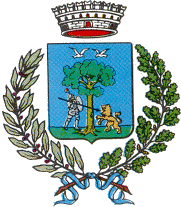
Alberobello | |||
| | |||
Saints Cosmas and Damian | |||
| According to the tradition, saints Cosmas and Damian were two brothers, of Arab origin, who lived between the 3rd and 4th century. They were doctors, having learned the medical science in Syria. Being also Christians, they dedicated themselves to assisting the sick without asking for any money from needy people. Through this activity, they could also preach and spread the word of Christianity. Their most famous miracle was the replacement of a patient's ulcered leg with another one taken from a recently deceased man. This preaching eventually cost them their life. During the persecution of Christians ordered by the emperor Diocletian, Cosmas and Damian were tortured and beheaded, together with other Christians. The veneration for these two saints quickly spread after their death, with churches dedicated to them in Constantinople, in Asia Minor, in Bulgaria, in Greece, Jerusalem, then Rome and Europe. They inspired a great number of painting and other art creations about their life. | |||
The patron saints celebration | |||
| Saints Cosmas and Damian are celebrated every year with a five day celebration. Initially, in the 17th century, the local count used to keep and worship a painting of the two saints and the painting used to be taken around the town during the religious procession, every year on 27 September. In 1782 the statue of saint Cosmas was made and, while entering the town, he made his first miracle: a heavy rain after a long period of drought. Two years later the faithful made the statue of saint Damian and the two statues replaced the painting in the procession. Don't miss this opportunity to visit this gem of Italy! | |||
| |||
| Alberobello is in the Puglia region. Its altitude is 428 metres above the sea level and has about 11,000 inhabitants. It is built on two hills, the eastern one with the modern buildings and
Alberobello origins date back to the second half of the 16th century. At that time it was a small feud owned by the noble family of Acquaviva. The counts allowed the farmers to build their houses only without mortar, so that, in case of a royal inspection, they would have been able to quickly demolish them and make them look like ruins. Otherwise, if it had appeared as a new town, the counts would have been obliged to pay a tax. Then, in 1797, a group of citizens, tired of continuously having to build and destroy their own houses, went to Taranto to ask for the king's help. Soon after that, King Ferdinando IV granted the small village its independence. The biggest trullo, a two storey trullo called Trullo Sovrano, is now used as a museum where you can learn about local history and traditions, agriculture, olive oil production (you can taste it, too!), admire the ancient furniture. It's like stepping in the past! Very close to the city centre there is a wood composed of several types of oaks, the Bosco Selva, a protected nature reserve. (By the way, Alberobello means "beautiful tree", with reference to a big oak once existing there, or a group of trees).
| |||
Other important recurring events | |||
| |||
For more information: Comune di Alberobello Ufficio Turismo Piazza del popolo 32 Alberobello BA tel. +39 080 4321200 e-mail: info@comune.alberobello.ba.it Visit the official website of the Comune di Alberobello When you contact this comune let them know you found them on www.calendar-of-patron-saints-and-cities-in-italy.com Cerca nel sito
Go from Alberobello and its patron saint to the Puglia region
|



